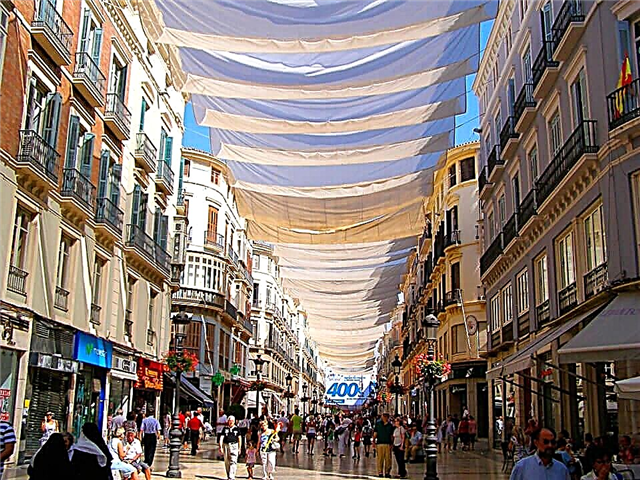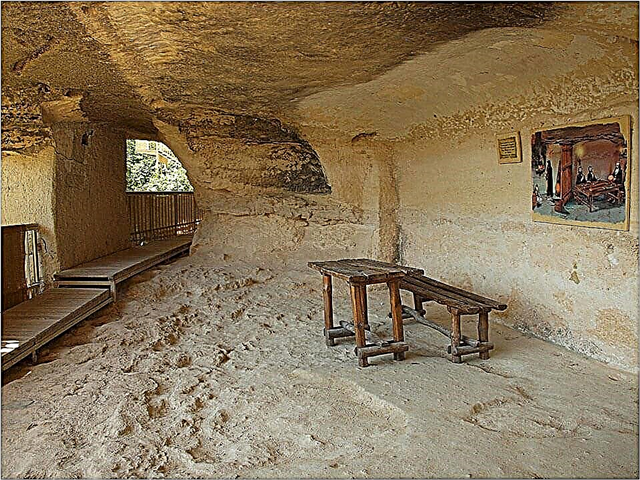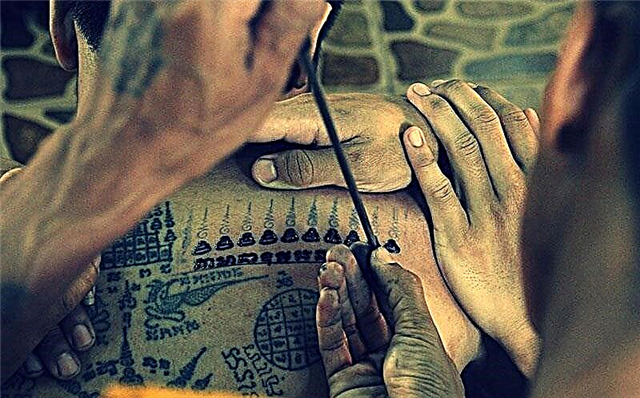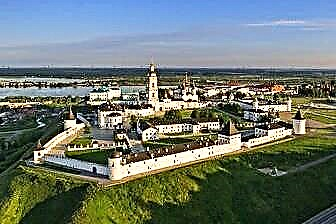Once Tobolsk was the center of all Siberia - vast new lands, which were actively developed by the young Russian Empire. That is why a large number of architectural monuments of the 17th-18th centuries have survived here - they built a lot, thoroughly and for a long perspective. After the loss of economic and political significance, life in the city froze a little, but today Tobolsk is being revived as one of the tourist centers of the region.
Historical sights are located in the Upper Town - the place where the first wooden prison was erected. In summer, in the vicinity of Tobolsk, you can swim in the Irtysh or visit mineral springs, and in winter go skiing in the Alemasova resort, which is distinguished by low prices and long runs.

The best hotels and hotels at affordable prices.
from 500 rubles / day
What to see and where to go in Tobolsk?
The most interesting and beautiful places for walking. Photos and a short description.
Tobolsk Kremlin
The only surviving stone Kremlin in Siberia, a unique example of 17th century architecture of great cultural value. Three hundred years ago, Tobolsk was the capital of the region, so Moscow strongly supported the construction of stone defensive structures. The main buildings of the Kremlin were erected by the beginning of the 18th century, supervised by S.U. Remezov, a cartographer, historian and part-time architect. The fortress walls, seven towers and a number of internal structures have survived to this day.

Sophia Cathedral of the Assumption
Orthodox church, which is part of the complex of the Tobolsk Kremlin. It was built in the 17th century on the model of the Moscow Ascension Cathedral. In 1920, the religious institution was closed and began to be used for economic needs. In 1961, the building was taken over by the Tobolsk Museum-Reserve, and in 1989 it was returned to believers. The restoration continued until 1994, after which the cathedral was consecrated by Alexy II.

Cathedral of the Intercession
The temple was erected in the middle of the 18th century, in the 19th century it was expanded twice. The main frame of the building is made in the form of a cross, in the center of which there is a drum ending with a dome. The predominant style is Baroque, although the walls and window openings look a little rough, which is not at all typical of this style of construction. Inside, the ceilings are covered with paintings from the mid-19th century.

Tobolsk prison castle
A former prison for exiles and convicts, built in the 19th century, and today it is a museum. F.M.Dostoevsky, N.G. Chernyshevsky, V. Korolenko, as well as several crime bosses of the 1990s visited here as prisoners. The institution operated until 1989. The museum is located on the territory of the Tobolsk Kremlin. Its expositions give an idea of the life, way of life and customs of the prisoners, the atmosphere reigns inside.

Gostiny Dvor
The complex was built in 1708 according to the project of S. Remezov. It is a unique monument of Siberian stone architecture. The building consists of two floors, it is built in the form of a rectangle with a courtyard. Towers topped with wooden roofs are located along the edges and above the entrance arch. Today the territory of the Gostiny Dvor houses a museum, craft workshops, a tourist center and a hotel.

Governor's palace
The building is part of the complex of buildings of the Kremlin and is an example of civil architecture. It was built in a classic style with a minimum of decor. In 1700, the Prikaz Chamber was located inside. After the fire, the building stood abandoned until 1831, until it was restored to accommodate the Provincial government offices. Since 2009, the Governor's Palace has become a part of the Tobolsk Museum-Reserve.

Rentereya
Civil building of the 18th century, where the provincial treasury was located in tsarist times. Captive Swedes were involved in the construction work, so the building was often called the "Swedish Chamber". At the end of the 19th – 20th centuries, the renter was used as an archive. Due to its unusual architecture, the building is perceived as part of a medieval castle - this is indicated by powerful walls, narrow windows and through arched passages.

Pryamskaya Vzvoz
Another monument of Siberian architecture of the 18th century, adorning the historical center of Tobolsk. In the past, it performed quite practical functions, connecting the upper part of the city with the lower one. The first wooden staircase was built in the 17th century, a century later it was replaced with a new one, reinforced with stone supports and walls - in this form it has survived to this day. The structure is about 600 meters long and consists of 198 steps.

Drama Theater named after P. P. Ershov
Oddly enough, but the dramatic stage was established with the participation and assistance of Metropolitan Philotheus in 1705. Of course, the first ideas were based exclusively on church subjects. Since 1744, they began to stage plays of secular content. The theater worked at the seminary, since 1794 it moved to a purpose-built building. At the end of the 19th century, a second building was erected, which burned down in 1991. Today the dramatic stage is housed in a modern building.

Art Museum
The collection was founded in 1870 at the provincial chancellery. The initial exposition consisted of several hundred items and told about the history and life of the indigenous Siberian peoples. A separate building was built at the expense of the townspeople in 1889. It has a very unusual appearance and somewhat resembles a palace due to the large number of decorative finishes and the pink color of the facade.

Cabinet-Museum of Emperor Nicholas II
Nicholas II and his family were exiled to Tobolsk after the emperor's abdication from the throne in 1917. They settled in the Governor's House and spent eight months here before leaving for Yekaterinburg. Today, in one of the rooms of the building, there is a memorial office, recreated from old photographs. It is furnished with rather modest furniture, photos of the royal family and portraits hang on the walls, but there are practically no genuine things here.

Church of the Holy Trinity
A neo-Gothic Catholic church built in 1909. In Soviet times, there was a dining room and office supplies inside, which significantly damaged the original architectural appearance. In 1993, the church was transferred to the Catholic parish and restored, in 2000, it was re-consecrated. Organ concerts are held in the church today. The performers play an instrument purchased with funds donated by Germany.

Temple of the Archangel Michael
An Orthodox church built in the middle of the 18th century in the Siberian Baroque style. In the 19th century, exiled Decembrists visited it. After 1917, it was closed and a cinema was placed inside; in the 1930s, the bell tower was dismantled. In this form, the building stood until the 1980s, until the restoration began, as a result of which the churches returned to their historical appearance. The restoration was repeated in the 2000s.

Ioanno-Vvedensky monastery
The women's monastery of the middle of the 17th century, founded, according to legend, at the place where the Mother of God herself indicated. Initially, the monastery was for men, but by the 19th century it fell into decay and was almost deserted. Then, by decree of the local archbishop, the remaining brothers were transferred to another place, and the Ioanno-Vvedenskaya monastery was transformed into a women's one. During the Soviet period, the activities of the institution were terminated, monastic life was revived in 1998.

Abalaksky Znamensky Monastery
The monastery complex is located 20 km from Tobolsk in the village of Abalak. Before the conquest of Siberia, the fortress of Khan Kuchum stood on the site of the monastery. The architectural ensemble of the monastery was formed in the 18th century. Its main buildings were erected in the Baroque style.Luxurious iconostases were placed inside, the walls were decorated with oil paintings. The main shrine is the Abalak icon of the Mother of God, acquired in 1636.

Tourist complex "Abalak"
A wooden fortress on the banks of the Irtysh, located not far from the Abalak monastery. It is a reconstruction of the fortress from the time of the conquest of Siberia. The complex consists of a fortress wall - a wooden palisade, watchtowers, entrance gates, provincial chambers, where the hotel is located. From a restaurant stylized as a Russian tavern, huts, baths, estates and gazebos. The area is decorated with wooden sculptures depicting folk characters.

Square named after Ershov
The square is located not far from the Tobolsk Kremlin. It is a small area where monuments are placed to the writer P. Ershov - a native of Tobolsk and the heroes of his famous work "The Little Humpbacked Horse": Ivan the Fool, the Firebird, the Tsar, the fish-whale and the horse itself. The original sculptural ensemble was installed to celebrate the 420th anniversary of Tobolsk. It was made according to the project of M.V. Pereyaslavets.

Ermak's garden
A city park founded in the 1850s at Cape Chukman. It was laid out around the Yermak monument, erected in 1839. At that time, there was a greenhouse and greenhouses, where it was possible to grow pineapples. The development of the park continued in the Soviet era as well - it remained one of the favorite recreation places of the townspeople. The garden offers a wonderful view of the Kremlin and the streets of Tobolsk.

Monument to the wives of the Decembrists
As is known from history, many wives of the Decembrists - aristocrats and noblewomen - went into exile along with their husbands, in spite of the hardships and hardships awaiting them. In honor of these brave associates, a sculptural group was erected in Tobolsk in 2008, consisting of a woman's figure and a rotunda surrounding her. The image of the Decembrist's wife symbolizes selflessness, courage and love.

Zavalnoe cemetery
The oldest necropolis in Tobolsk, which has been operating since 1772. Many famous personalities are buried on it, including the Decembrists exiled to Siberia: V.K.Kyukhelbeker, A. Muravyov, F. Bashmakov, A. Baryatinsky and others. Also here are the graves of A. A. Dunin-Gorkavich - the explorer of Siberia, the historian of Siberia P. Slovtsov, the poet D. Davydov. Many burials are classified as monuments of federal and regional significance.












